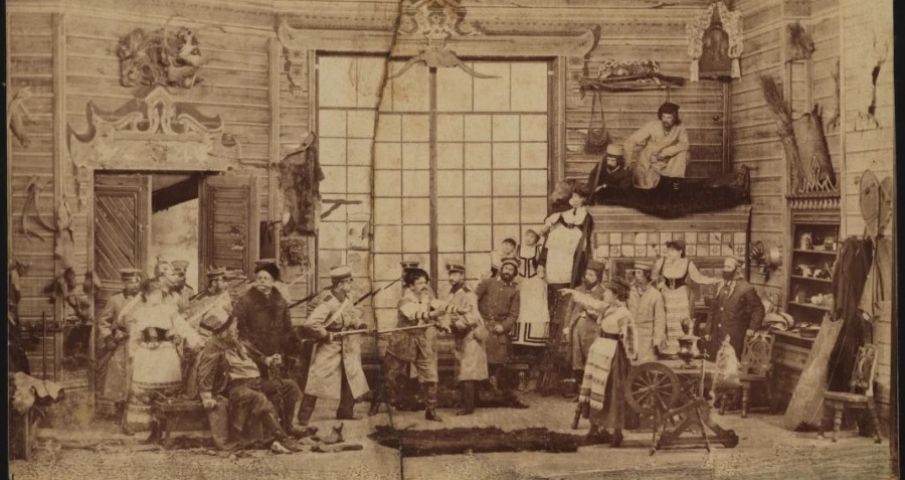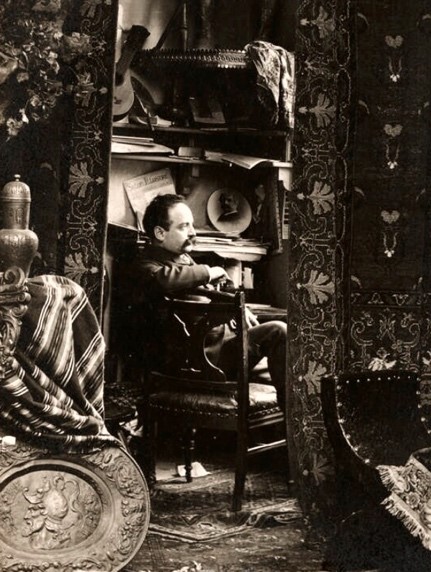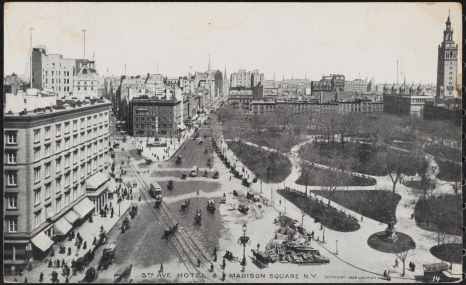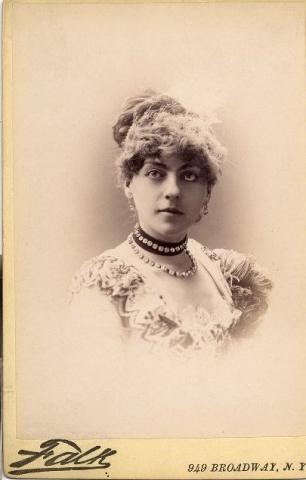Benjamin J. Falk, Celebrity Portrait Photographer
Oct 7, 2021

Open House New York celebrates its return to the city this year on the weekend of October 16-17. In honor of OHNY’s in-person tours, virtual experiences, and self-guided explorations of architecture and design across the five boroughs, the Flatiron Partnership highlights the neighborhood studios of 19th-century pioneer photographer Benjamin J. Falk. The lifelong New Yorker’s subjects included cultural icons such as writer Mark Twain, members of the Barrymore acting dynasty, and Flatiron native and U.S. President Theodore Roosevelt.

Benjamin J. Falk – Photo Credit: Wikipedia Commons
Born on October 14, 1853, Manhattanite Benjamin J. Falk was an 1872 graduate of The City College of New York, then located at 23rd Street and Lexington Avenue. As a student, Falk also served as “a technician under photographer George Rockwood,” writes the website broadway.cas.sc.edu. Then in 1877, Falk opened his first photography studio at 347 East 14th Street. However, by 1881, he made the decision to relocate to 949 Broadway at 22nd Street, where Falk’s work purportedly “grew rapidly, developing largely in the line of portraits of celebrities.” (The Broadway site would later become part of the future locale for the Flatiron Building, which was completed in 1902.)
Notes the Museum of the City of New York’s blog.mcny.org about Falk’s Broadway location, “The center of New York City theatrical life in 1877 was Madison Square. Falk moved to be closer to the action and his clientele. From there he steadily built his reputation as an insightful portraitist of theatrical characters.” And, adds the website, “almost from the beginning, Falk’s Broadway studio featured electric arc lights. In 1883, he took his lights to Madison Square Theatre to capture a scene from A Russian Honeymoon. The resulting images were the first to capture a full theatrical production scene in a New York playhouse.”

5th Ave Hotel & Madison Square N.Y. – Photo Credit: Museum of the City of New York
Falk is also “credited as one of first photographers to embrace dry plates,” according to historiccamera.com. “Always a photographic trailblazer, Mr. Falk was the only portrait photographer in New York City to transition into color photography. He was also acutely aware that a portrait reflected not only the sitter but also the temperament of the photographer himself.” Following the 1896 death of Napoleon Sarony, a Quebec City, Canada native who had become the leading photographer behind the images of New York City’s theatrical scene, Falk soon became its top lensman.
His subjects were notable men and women, including actresses Sara Bernhardt, Lillian Russell, and Georgie Drew Barrymore (Drew Barrymore’s great-grandmother), The Adventures of Tom Sawyer author Mark Twain, and Theodore Roosevelt, who was born and spent his childhood in an East 20th Street brownstone before becoming the first New York City resident to serve as an American President. “Performers had to cart their costumes and props to Falk’s premises for sittings,” writes luminous-lint.com. “His inability to pay for exclusive picture rights with stars periodically got him into lawsuits. Falk was an aggressive businessman, repeatedly bringing debtors to court throughout his career more than any other photographer in the city.”

President Theodore Roosevelt – Photo Credit: Library of Congress
During the early 1890s, however, the so-called “Master of Light” moved yet again after an 11-year stay at his Broadway property. “The construction of more and taller buildings blocked out much of the light Falk needed,” writes blog.mcny.org. Falk then relocated to 13-15 East 24th Street, near Madison Square Park.

Georgie Drew Barrymore – Photo Credit: Broadway Photographs
In 1900, however, Falk sought an even brighter workspace. The location would be the Waldorf Astoria Hotel’s rooftop solarium, then on Fifth Avenue and 34th Street. “The solarium supplied superb natural light during the day,” writes broadway.cas.sc.edu, “and his 25 x 30 operating room became the envy of the photographic fraternity.” Adds blog.mcny.org, “Making use of natural light during the day, Falk also maintained an interior studio for moodier portraits, completely outfitted with electric lights using his own set-ups complete with flash and umbrellas.” Falk also helped establish the Photographers’ Copyright League to protect the intellectual property rights of photographers. Once asked about what was key in creating effective portraits, Falk, who passed away in Manhattan on March 19, 1925 at the age of 71, reportedly replied, “I name expression, posing, and lighting in the order as they appear to be most important. The technique of the profession being absolutely under the control of the operator since the introduction of the dry plates, there is no excuse now for any but perfect photographic results. I have always made my price high enough, so that I did not have to consider the cost of material while doing my work.”
Thumbnail Photo Credit: Museum of the City of New York
Header Photo Credit: Museum of the City of New York







